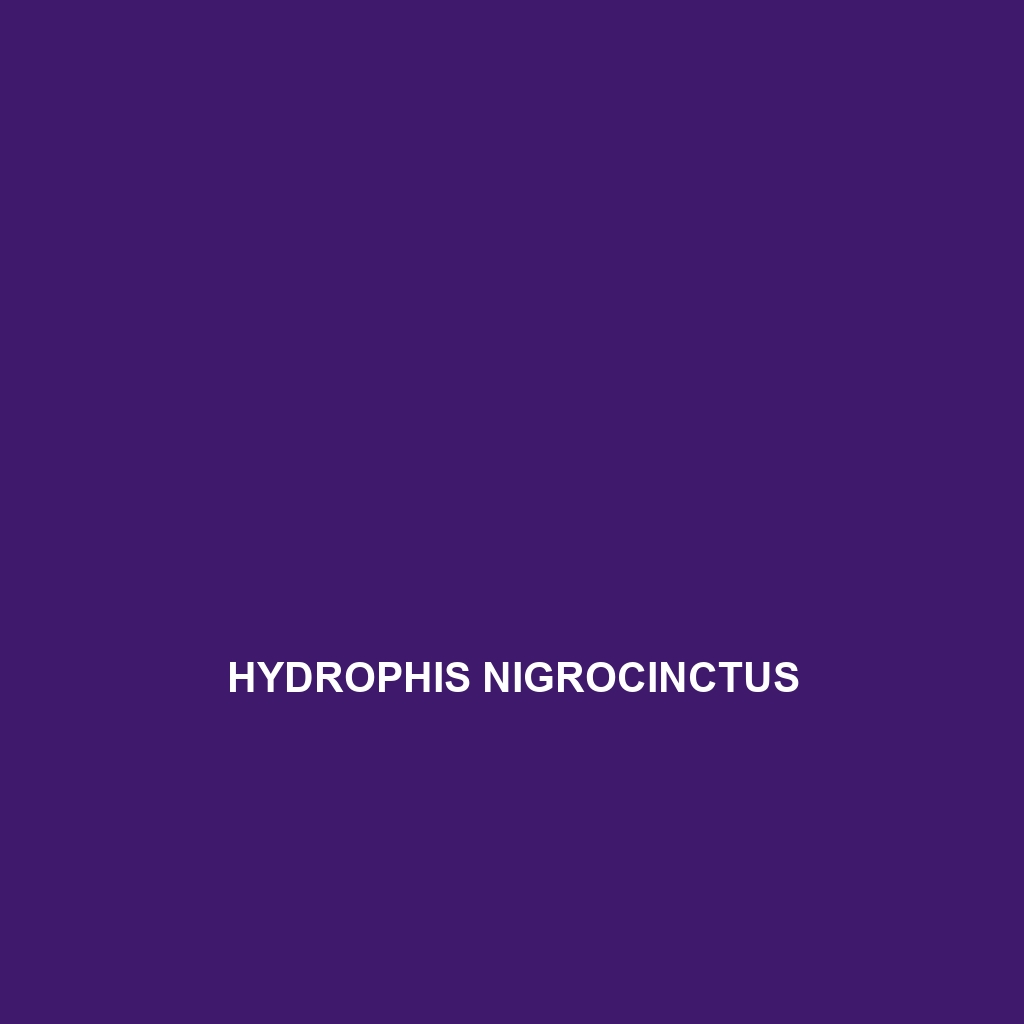Common Name
Hydrophis nigrocinctus
Scientific Name
Hydrophis nigrocinctus
Habitat
Hydrophis nigrocinctus, commonly known as the black-banded sea snake, predominantly inhabits marine habitats located in the Indo-Pacific region. This striking species is primarily found in shallow coastal waters, typically within the tropics, including areas like the Sundarbans of India, the Coral Sea, and regions around the Philippines, Indonesia, and parts of Australia. The snake prefers environments such as coral reefs, mangroves, and sandy or rocky substrates in clear waters, where it can evade predators and hunt for prey. The climate where Hydrophis nigrocinctus resides is generally warm and tropical, with water temperatures that range from 25°C to 30°C (77°F to 86°F), making it an ideal habitat for this fascinating species.
Physical Characteristics
Characterized by its significant adaptations to aquatic life, Hydrophis nigrocinctus exhibits a streamlined body that can reach lengths of up to 1.5 meters (approximately 5 feet). The coloration of this species is notably distinctive, featuring a series of black bands on a pale yellow to white background, giving it a vibrant yet cryptic appearance against the ocean floor. Its flattened tail aids in propulsion through water, enhancing swimming efficiency. The species possesses specialized lungs that allow it to absorb oxygen while remaining submerged for extended periods. Overall, its physiology not only aids in camouflage but also in efficient movement within marine ecosystems.
Behavior
The behavior of Hydrophis nigrocinctus is characterized by its nocturnal tendencies, often being more active during the night when it hunts for prey. These snakes are generally solitary creatures, although they may congregate in twos or threes during the breeding season. Mating rituals typically occur from October to December, a time when the males exhibit combat displays to attract females. During the day, the species can often be found basking on rocks or coral structures, near the water surface, or swimming effortlessly. Their unique habit of surface breathing allows them to remain submerged while keeping just their nostrils exposed.
Diet
Hydrophis nigrocinctus is a carnivore, primarily preying on small fish, eels, and occasionally crustaceans. Its diet largely consists of prey that can be captured with speed and agility. The snake utilizes its neurotoxic venom to immobilize its prey, making it an efficient hunter within the marine food web. Feeding generally occurs during the early evening, allowing the snake to take advantage of the dim light for stealthy pursuits. This dietary specialization contributes to its role within its ecosystem, acting both as a predator and a prey species for larger marine animals.
Reproduction
The reproductive cycle of Hydrophis nigrocinctus is fascinating and begins with courtship behaviors during the mating season. Females give birth to live young, with litters typically consisting of 3 to 15 hatchlings. The gestation period lasts around six months, and the young are fully aquatic at birth. Parental care is minimal; however, the mother will select birth sites that are safe from predators and provide suitable habitat for her young. This reproductive strategy helps to increase the survival rates of the offspring in their early stages.
Conservation Status
As of current assessments, Hydrophis nigrocinctus is classified as least concern on the IUCN Red List. While the species is not facing immediate extinction threats, habitat destruction, pollution, and fishing activities pose risks to its populations. Conservation efforts focus on protecting marine environments and promoting awareness about sustainable practices. Marine protected areas (MPAs) have been established in various parts of its range to support the health of marine ecosystems and safeguard the natural habitats of this species.
Interesting Facts
One intriguing fact about Hydrophis nigrocinctus is its ability to tolerate salinity, allowing it to thrive purely in marine conditions. Additionally, this species is often found in tandem with specific fish species, possibly benefiting from mutualistic relationships where fish provide an early warning of predators. Despite its venomous nature, humans are rarely harmed due to its reclusive behavior and preference for avoiding confrontation.
Role in Ecosystem
Hydrophis nigrocinctus plays a crucial role in maintaining the health of marine ecosystems. As a feed predator, it helps regulate the populations of its prey, contributing to a balanced marine food web. In turn, it serves as prey for larger marine animals, thus forming an integral part of the oceanic food chain. Through its interactions with both prey and predator species, Hydrophis nigrocinctus functions as a keystone species, helping to sustain ecological balance and biodiversity within its habitat.
This HTML-formatted species description covers various aspects of the black-banded sea snake, Hydrophis nigrocinctus, providing a comprehensive overview while incorporating SEO-friendly keywords for enhanced search visibility.
